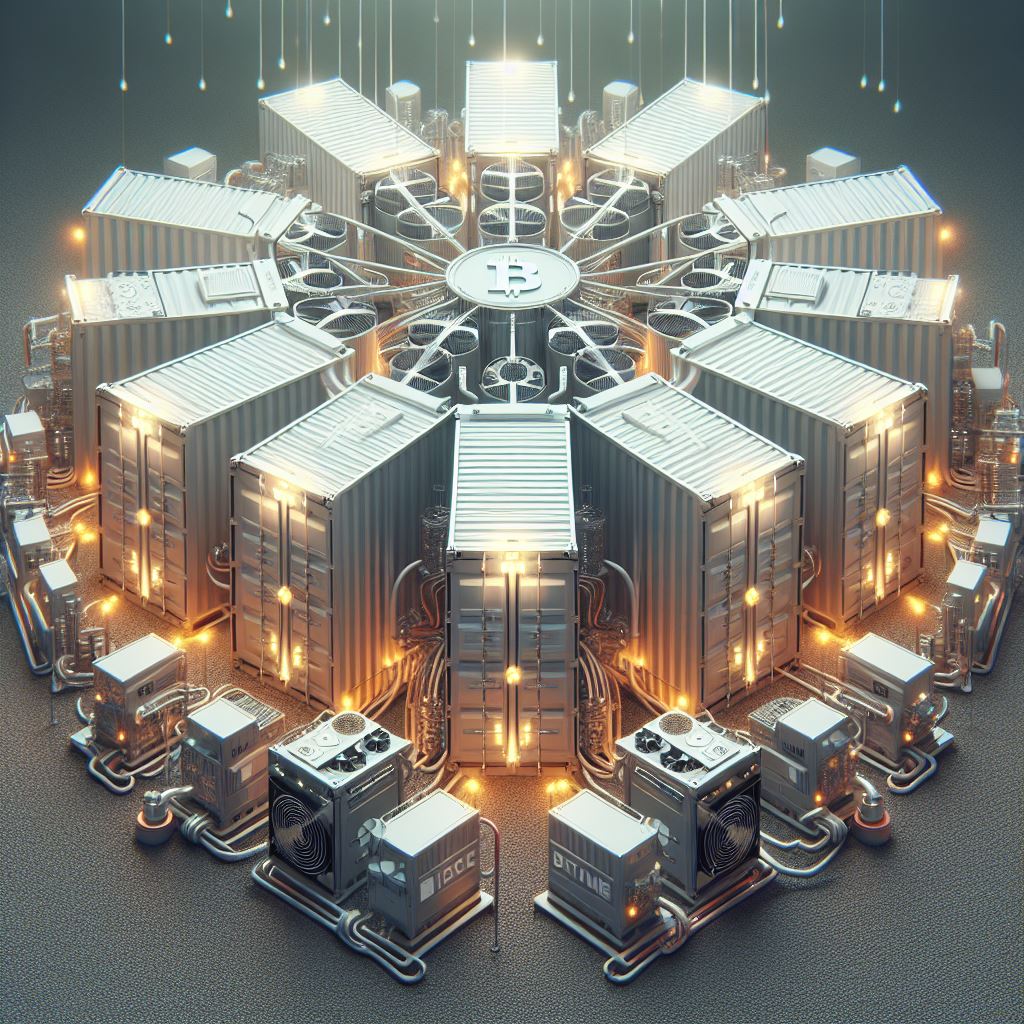
The Definitive Guide to Maximizing Bitcoin Mining Containers
Category: Bitcoin Mining Date: Feb 06, 2024
Bitcoin mining, the cornerstone of securing the Bitcoin network, has evolved significantly since its inception in 2009. Originally a task achievable on personal computers, the increasing popularity and complexity of Bitcoin mining led to the development of specialized equipment, particularly Application-Specific Integrated Circuits (ASICs). This shift towards efficiency and power marked a turning point, resulting in large-scale mining operations. As the industry matured, a groundbreaking solution emerged – Bitcoin mining containers. These mobile, modular data centers cater to the dynamic needs of miners and offer advantages such as mobility, cost-effectiveness, scalability, and energy efficiency.
Understanding Bitcoin Mining Boxes:
Bitcoin mining containers are specifically crafted, transportable structures engineered to accommodate and energize Bitcoin mining equipment. These self-contained data centers, often repurposed from shipping containers, include power supply units, cooling systems, and security measures. The primary purpose is to create a flexible, efficient, and scalable environment for large-scale cryptocurrency mining operations. The mobility of these containers allows miners to capitalize on favorable conditions, such as lower electricity costs or cooler climates, optimizing profitability.
Historical Context:
The concept of Bitcoin mining containers emerged in response to the evolving needs of the industry. Initially, individual hobbyists engaged in mining, but as the scale grew, industrial mining farms became prevalent. These farms required substantial infrastructure investments and lacked flexibility. Bitcoin mining boxes addressed these challenges by offering a scalable, efficient, and mobile solution. This adaptability allowed miners to set up operations in ideal locations and swiftly relocate in response to changing conditions.
Types of Containers:
Several types of Bitcoin mining containers cater to diverse needs:
1. Standard Shipping Container Conversions:
Retrofitted from standard shipping containers, these are cost-effective and readily available.
2. Custom-Built Containers:
Tailored for Bitcoin mining, these containers may include advanced features like enhanced cooling systems and modular power distribution.
3. Immersion Cooling Containers:
Utilize immersion cooling technology for highly efficient heat management and potentially extend the lifespan of mining hardware.
4. Modular Containers:
Designed for easy expansion, enabling miners to scale their operations as needed.
5. Eco-Friendly Containers:
Focus on sustainability, operating with renewable energy sources and energy-efficient cooling systems.
Advantages of Bitcoin Mining Containers:
1. Mobility and Flexibility:
Easily transportable containers allow miners to relocate to areas with optimal conditions, adapting to changes in energy prices or regulations.
2. Cost-Effectiveness:
Repurposing existing structures minimizes setup costs, and the ability to move operations to regions with cheaper electricity reduces operational expenses.
3. Scalability:
Modular design enables easy expansion, providing flexibility to increase mining power without substantial upfront investments.
4. Energy Efficiency:
Advanced cooling systems and the use of stranded or flared gas contribute to improved energy efficiency, aligning with the industry’s growing emphasis on sustainability.
5. Rapid Deployment:
Plug-and-play setup allows for quick deployment, essential for capitalizing on short-term opportunities in the mining sector.
Technological Innovations and Trends:
1. Cooling Technologies:
Advancements focus on improving cooling efficiency through technologies like immersion cooling, reducing energy consumption and environmental impact.
2. Renewable Energy Integration:
Growing interest in integrating solar, wind, and hydroelectric power to reduce the carbon footprint of mining operations.
3. Methane Mitigation:
Innovative use of mining containers to convert excess methane from oil and gas extraction into electricity, addressing environmental concerns.
Future Prospects:
The future of containerized Bitcoin mining is shaped by sustainability, energy efficiency, and adaptability. Trends include increased use of renewable energy sources, technological innovations for enhanced efficiency, and smart technologies for monitoring and automation. Regulatory adaptability and quick relocation may favor containerized mining operations.
Making an Informed Decision:
Potential miners should consider factors such as container size, cooling technology, energy source compatibility, mobility requirements, budget constraints, and scalability. Conducting a thorough cost-benefit analysis, considering initial investment, operational costs, projected earnings, payback period, and risk assessment, is crucial. Understanding and complying with local regulations is paramount to ensuring a successful and compliant mining operation.
Bitcoin mining containers have become a pivotal element in the cryptocurrency mining landscape, offering adaptability, scalability, and sustainability. As the industry continues to grow, the role of these containers is expected to become increasingly prominent. Resources, including industry reports and case studies, provide deeper insights, while consulting with professionals, such as BitDashu Crypto Mining, can offer tailored advice and solutions for those venturing into this dynamic domain.

